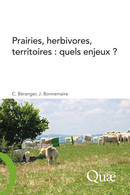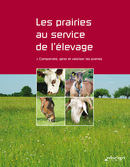Grassland use in Europe
A syllabus for young farmers
Dans la même thématique
0,00 € (gratuit)
0,00 € (gratuit)
0,00 € (gratuit)
0,00 € (gratuit)
Caractéristiques
Langue(s) : Anglais
Éditeur : Éditions Quae
Édition : 1re édition
Publication : 13 décembre 2019
EAN13 eBook [PDF] : 9782759231461
EAN13 eBook [ePub] : 9782759231478
DOI eBook [PDF] : 10.35690/978-2-7592-3146-1
Nombre de pages eBook [PDF] : 264
Nombre de pages eBook [ePub] : 264
Intérieur : Couleur
Référence eBook [PDF] : 02729NUM
Référence eBook [ePub] : 02729EPB
Taille(s) : 8,84 Mo (PDF), 9,38 Mo (ePub)












